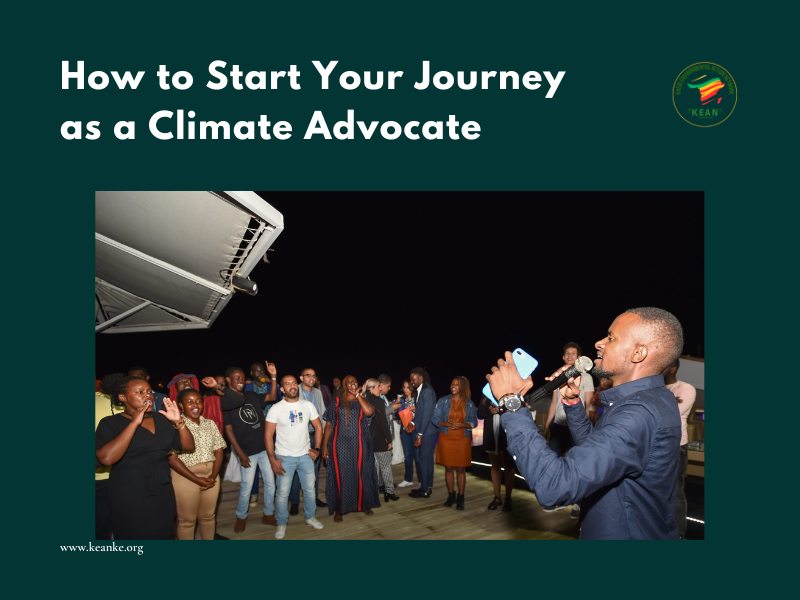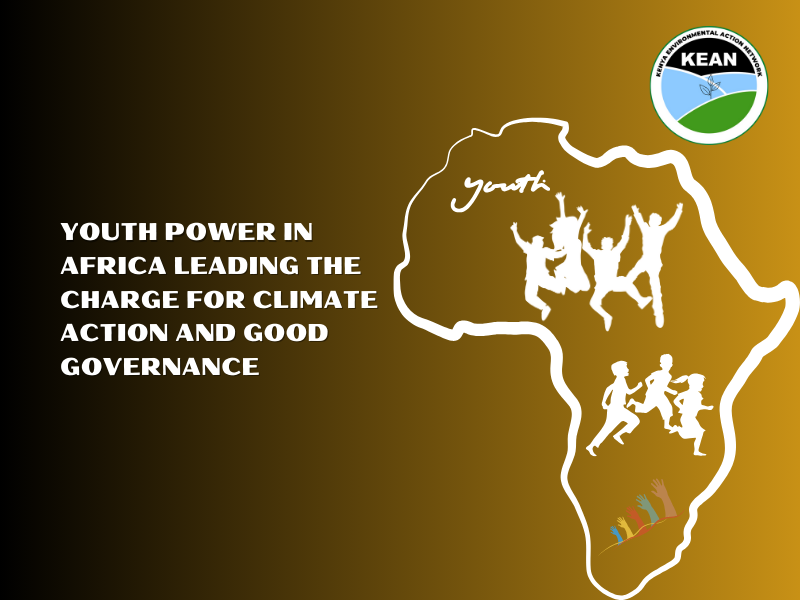Introduction
Becoming a climate advocate is a rewarding journey, and with environmental issues intensifying globally, now is the best time for youth to get involved. This blog post will offer a step-by-step guide to help young people in Africa and beyond kickstart their advocacy journey, focusing on finding their niche and purpose in the climate movement.
Why Climate Advocacy is Crucial for Youth
Climate change is a pressing global crisis that disproportionately impacts young people and future generations. Advocacy and activism are essential tools for driving environmental policies and actions. By raising awareness, mobilizing communities, and putting pressure on decision-makers, young people can play a crucial role in shaping a sustainable future.
In Africa, climate change is exacerbating existing challenges such as poverty, food insecurity, and water scarcity. Extreme weather events like droughts, floods, and heatwaves are becoming more frequent and severe, disrupting livelihoods and displacing communities. Youth in Africa are particularly vulnerable to the impacts of climate change, making their involvement in advocacy essential.
Step 1: Finding Your Niche
The first step in becoming a climate advocate is to identify the specific aspect of climate change that you are most passionate about. This will help you focus your efforts and connect with like-minded individuals. Here are some potential areas to consider:
- Renewable Energy: Explore the transition to clean energy sources like solar, wind, and hydropower.
- Sustainable Agriculture: Promote practices that protect the environment and ensure food security.
- Environmental Justice: Advocate for equitable access to environmental resources and protection from pollution.
- Plastic Pollution and Waste Management: Work to reduce plastic consumption and improve waste management systems.
Step 2: Building Climate Knowledge and Skills
To be an effective climate advocate, it’s important to have a solid understanding of climate science, policy, and activism. Here are some ways to build your knowledge and skills:
- Enroll in Online Courses: KEAN International offers a variety of online courses on climate change, sustainability, and advocacy. These courses can provide you with the theoretical foundation and practical skills you need to succeed.
- Attend Local Workshops and Webinars: Participate in local workshops and webinars on environmental conservation and climate action. These events can connect you with experts and like-minded individuals.
- Read Blogs, Journals, and Publications: Stay informed about the latest developments in climate science and policy by reading blogs, journals, and publications on the topic.
Step 3: Joining or Starting Climate Action Groups
Joining or starting a climate action group is a great way to connect with other young people who are passionate about environmental issues. These groups provide opportunities for networking, learning, and taking collective action.
KEAN International is a leading youth-led organization that empowers young people to address climate change. By joining KEAN, you can connect with a global network of climate advocates and participate in a variety of initiatives.
If you can’t find a suitable group in your area, consider starting your own. With support from experienced organizations like KEAN, you can create a space for young people to come together and make a difference.
Step 4: Creating Climate Campaigns
Once you have a solid understanding of climate change and have connected with other advocates, you can start planning and executing your own climate campaigns. Here are some tips for creating effective campaigns:
- Leverage Social Media: Use social media platforms to raise awareness, mobilize support, and share information about your campaign.
- Organize Local Events: Organize local events like environmental clean-ups, tree planting initiatives, or climate strikes to engage your community.
- Partner with Schools and Local Governments: Work with schools and local governments to promote climate-friendly policies and initiatives.
Step 5: Collaborating with Mentors and Peers
Networking and learning from experienced mentors is essential for building a successful advocacy career. KEAN International offers mentorship programs that connect young climate advocates with experienced professionals.
By collaborating with mentors and peers, you can gain valuable insights, build your skills, and expand your network.
Conclusion
Becoming a climate advocate is a rewarding journey that can have a significant impact on the world. By following the steps outlined in this guide, you can find your niche, build your knowledge and skills, connect with others, and create meaningful change.



